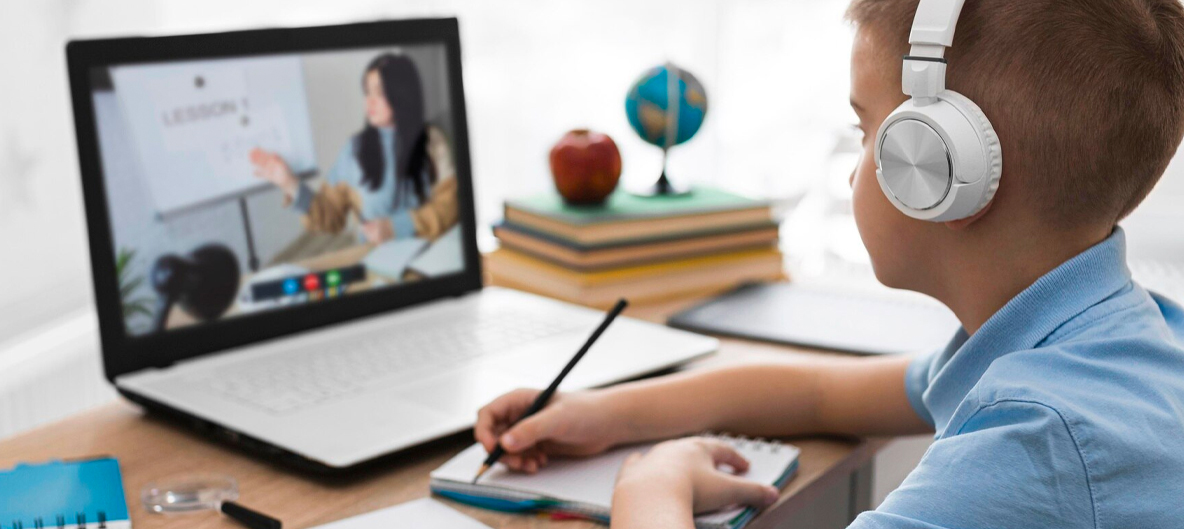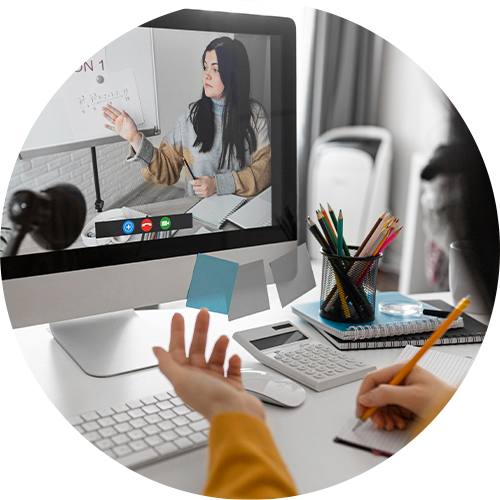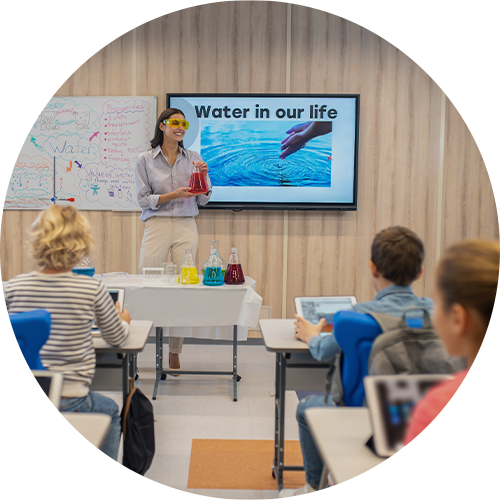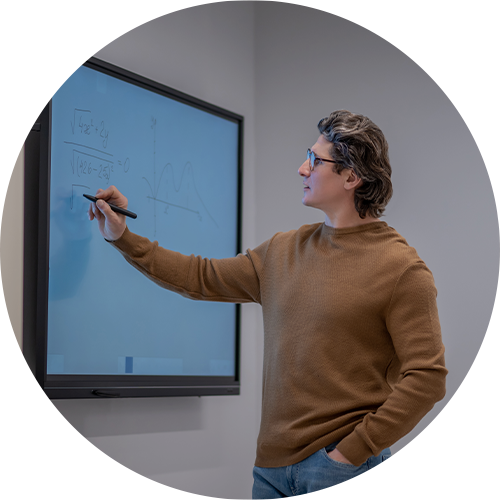
November 8, 2023
Using Video In Education
Video is key to transforming education, making it adaptable to different needs, increasing engagement, enhancing 21st century skills, and improving results. We dive into the details of how video benefits education and what are the tools for successful implementation.
Video is an agent of change, has revolutionized how we communicate, entertain ourselves, consume information, and learn. Video plays a key role in the classroom, aiding students, and teachers alike with its numerous benefits.
It fits perfectly with the current paradigm shift in education, entitled Education 3.0, where traditional lectures are being put aside in favour of interactive or project-based learning supported by multiple types of technology.
Education 3.0 and the "Flipped classroom"
Education 3.0 focuses on blended learning, using multiple methods to create a flexible, customizable learning system based on the dynamic interaction between the students, teachers, and the material. Interactive and project-based learning is based on Q&A sessions, quizzes, discussions, labs, and real-life examples.
This allows for a high level of customization where the content can be tailored to fit the class and even the needs of specific students.
One might also take it a step further, turning traditional classroom learning on its head into what is called a flipped classroom. Here, students consume new learning material at home (online) and spend classroom time working together on assignments.
Such a paradigm shift requires a variety of tools, infrastructural; such as stable internet access, spacious classrooms, and furniture; hardware; personal devices, presentation technology, video conferencing technology, servers, and others; and software; Content Management Systems, wireless sharing, creative tools and more.


Trends
This revolution in teaching style comes from many years of research and a greater understanding of how people learn. ‘One size fits all’ has long been rejected as truth for learning methods, and the focus for the last many years has been on flexibility and personalization.
This development in education unfolded alongside developments on the job market. The world is a global village, and more than ever, its focus is on competitiveness and adaptability. Soft skills, such as critical problem solving, communication, and collaboration are a necessity. Education models are, therefore, also adapting to help prepare young people for their future.
The modern classroom has changed. It has transformed from a place where students passively received content to a place where they are active designers and participants of their learning experience. The classroom has opened up to rich media formats such as videos, which are used to communicate with subject experts and peers from anywhere on the globe.
It’s not hard to understand why video is such a hit in education. Technology in this area has developed at lightning speed, and at the time of writing, 3.5 Billion people in the world own a video-enabled device (smartphone).
In July 2020, 4.5 Billion people were active internet users. Video is also widespread on dozens of platforms like on-demand streaming services and social media. Furthermore, Millenials and Gen-Z are the age groups that consume the most digital content.
As video production and distribution became accessible, many higher education institutions began to offer distance/online learning that is heavily video-based. Private companies have followed suit, creating peer-to-peer online learning communities and platforms. Examples are Udemy, Coursera, Linkedin Learning, and Skillshare.
Learning new things online through video has become normal, even desirable – making education accessible regardless of location or finances.
Advantages of video in education
The effects of video in education have been well-documented, creating many advantages for all stakeholders.
Benefits for students
- Supports multisensory learning (images, text, audio, interactivity)
- Improves comprehension
- Improves retention of information
- Stimulates students’ ability to recall information
- Can bring a subject to life, making the topic more engaging
- Travel and experience new places without leaving the classroom
- Realistic experiences that enhance cross-cultural understanding
- Visualization strengthens the links between abstract ideas and practical applications
- Supports the communication of complex topics
- Develops digital literacy
- Enhances creative and collaboration skills
- Creates an authentic learning experience when interacting with experts through video
- Opportunity for deep learning with video player functions such as stop, rewind, fast forward and replay
- Provides flexibility for busy schedules with on-demand streaming
- Provides access to knowledge regardless of distance
- Benefits for teachers
- Increases students’ engagement
- Acts as excellent supplementary material for traditional teaching methods
- Help teachers create a blended learning environment
- Facilitates innovative teaching methods
- Provides an opportunity for professional development through sparring with other teachers online
- The cost question
Before diving into the benefits that video creates for educational institutions, let us examine some typically raised arguments. Video production, storage, and distribution require buying a lot of tools and platforms. Teachers and students need to be properly onboarded to learn how to use these tools.
Curricula and lesson plans must be changed to introduce video as a supporting or primary element. Some school boards might question the costs and ROI of such an investment.
However, video in education is well documented to improve student outcomes. Better student performance means a higher school ranking, more sponsorships, scholarships, and funding.
Furthermore, investing in video technology for education can reduce costs in other areas, such as HR and printed materials. Finally, video classes can also be monetized using advertising or by opening up to remote students through subscription programs.


Benefits for institutions
- Improve student outcomes and achievement levels
- Increases marketing opportunities by reaching a wider audience
- Makes staff training more flexible
- Increase online course offerings
- Provide students with a more diverse and accessible teaching style
- Make your institution more attractive being increasing accessibility of education
- Tools for the successful use of video in education
- Connections
Classroom users (teachers and students) may have different devices with different inputs options that may or may not be compatible with the AV equipment in the classroom. The classroom must, therefore, be equipped with the necessary cables and adapters to match different devices.
Alternatively, the school or institution might opt for wireless classrooms, in which case students and teachers need to be trained in using the wireless sharing application. With wireless sharing, a stable, fast internet connection is a must.
Multimedia
To use video as supplementary material in the physical classroom, the room must be equipped with the right audio and video equipment to support this goal. Depending on the size of the classroom and the type of institution, it could a display, projector and screen or interactive whiteboards.
Audio solutions can range from a simple set of speakers or a soundbar to a more complex audio solution including microphones, mixers, matrixes, amplifiers and speakers (in case of an auditorium).
Connecting the classroom to the outside world
Peer to peer education is a growing trend, where it has become quite popular to pair schools and classrooms in different regions or countries. To connect one classroom to another, rooms need to be equipped with video conferencing hardware (and software/applications) to create a live, “face-to-face” experience for the students.
Video conferencing tools are also necessary when having guest speakers in the classroom attending remotely.
Software
Of course, the right equipment is only part of the equation when successfully integrating video in education. The right digital infrastructure is also a key element. This includes:
- Learning Management Systems
- Streaming and video sharing platforms
- Unified communication platforms
- Video conferencing applications
- E-learning platforms
INSPIRING CASE STORIES
LET'S CONNECT
Fill out this form and a Biamp expert will reach out to you via phone or email. In some regions we may share your contact details and inquiry with one of our qualified third-party sales partners to follow up directly to ensure better local service. For more information please see our Privacy Policy.




